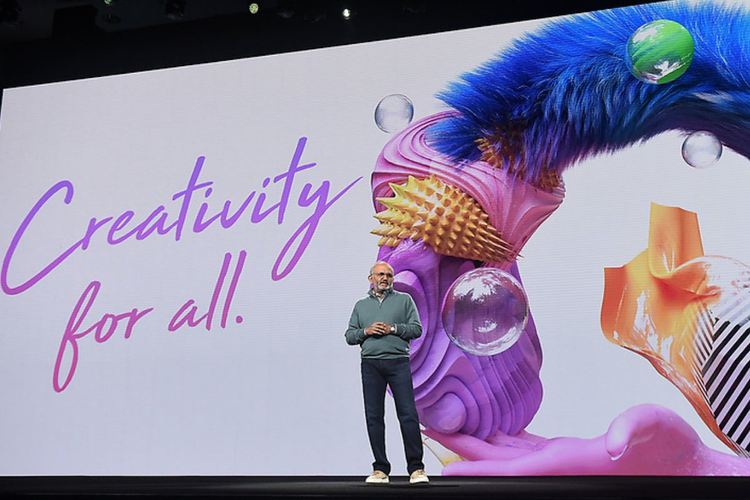The ‘Golden Age’ Of Creativity: Where Imagination Intersects With Technology
We are in the “Golden Age” of creativity, said Adobe CEO Shantanu Narayen during his opening keynote address at Adobe MAX.

We are in the “Golden Age” of creativity, said Adobe CEO Shantanu Narayen during his opening keynote address at Adobe MAX—The Creativity Conference, in Los Angeles this morning.
According to Narayen, technology has made storytelling more fertile than ever before, giving creators a plethora of different rich media options that are now accessible to anyone looking to tell a story.
“Amazing things happen at the intersection of imagination and technology,” Narayen told 20,000-plus creative professionals in the audience. However, he said, creativity is a human skill that is all about making connections, which means that technology could help amplify human creativity but could never replace it.
New channels and mediums, such as voice, augmented and virtual reality, and more, are helping creators (both individuals and companies) innovate from a storytelling perspective, while technology such as artificial intelligence works behind the scenes to accelerate productivity for individuals and teams, he said, alluding to the fact that times have really changed and that today anyone can tell their story and distribute it to the world. It is for this reason, he explained, that Adobe is such a firm believer in the mantra of “creativity for all,” and enabling creativity anywhere, anytime inspiration hits.
Imagination, said Scott Belsky, chief product officer for Adobe Creative Cloud, is a uniquely human trait and it drives creativity.
“Our imaginations are unlimited, but something holds us back,” Belsky said. “Time. Time spent searching the Web, tagging, and tolling over chores that take time. … Time is a narrow door that everything we want to create must pass. We want to help you conquer time.”
With that, Belsky brought a number of people on stage to show the audience some of the Adobe Creative Cloud enhancements and features announced at MAX that are meant to make the creative process easier, faster, and more streamlined (see all MAX announcements here).
“We want everyone to have the creative skills to tell stories, their stories,” Belsky said.
It’s no secret that creativity and design have been playing a much bigger and more strategic role in businesses today, according to Jamie Myrold, VP of design at Adobe, who spoke at Adobe MAX about the reason that design now has a seat at the table.
According to Myrold, today’s never-ending discussion on the importance of design in business is a big shift from how designers were once viewed. Designers were once thought of as nothing more than decorators, brought into workflows toward the end of a project to sprinkle some beauty around.
“Today, design is central to any company running an experience-driven business,” Myrold said. “We design for multiple surfaces, with different inputs like touch and voice. New, immersive, and augmented realities and data informs all of our decisions.”
Myrold’s team is on the hook for experience design within Adobe’s multitude of applications, something she admitted could be challenging at times. To overcome this challenge, Myrold’s team needed to build a design system, which they dubbed “Spectrum.” Her advice to the folks in the audience: A design system is going to be key to cross-channel and platform consistency when creating experiences.
Also part of this experience-driven thinking is a move toward creating more immersive environments, according to Belsky. This is a trend he expects will continue as formats like 3D, augmented reality, and virtual reality become mainstream from a consumer adoption standpoint.
In fact, that is the reason Adobe has formed a new 3D Immersive media team internally, tasked with helping the company figure out how it can better cater to this growing. This type of team could very well become a trend within businesses today, who are all still trying to figure out the role that 3D and other immersive formats, such as augmented reality (AR), play in how they tell their brand stories.
Abhay Parasnis, CTO of Adobe, came on stage to talk more about creative intelligence and the role artificial intelligence (AI) is playing in imaging, video, immersive media, and more.
Artificial intelligence can now understand objects and composition in images, he said. It can help you find that perfect asset, and AI has taken visual search to higher levels. AI understands objects, concepts, and relationships, and, according to Parasnis, it will help amplify human creativity. It is foundational to everything that Adobe is doing.
Besides AI, Parasnis is also extremely bullish on the opportunities surrounding immersive formats such as virtual reality and AR. “Immersive media,” he said, “is the next frontier” for experiences and will “turn the world around you into your canvas.”